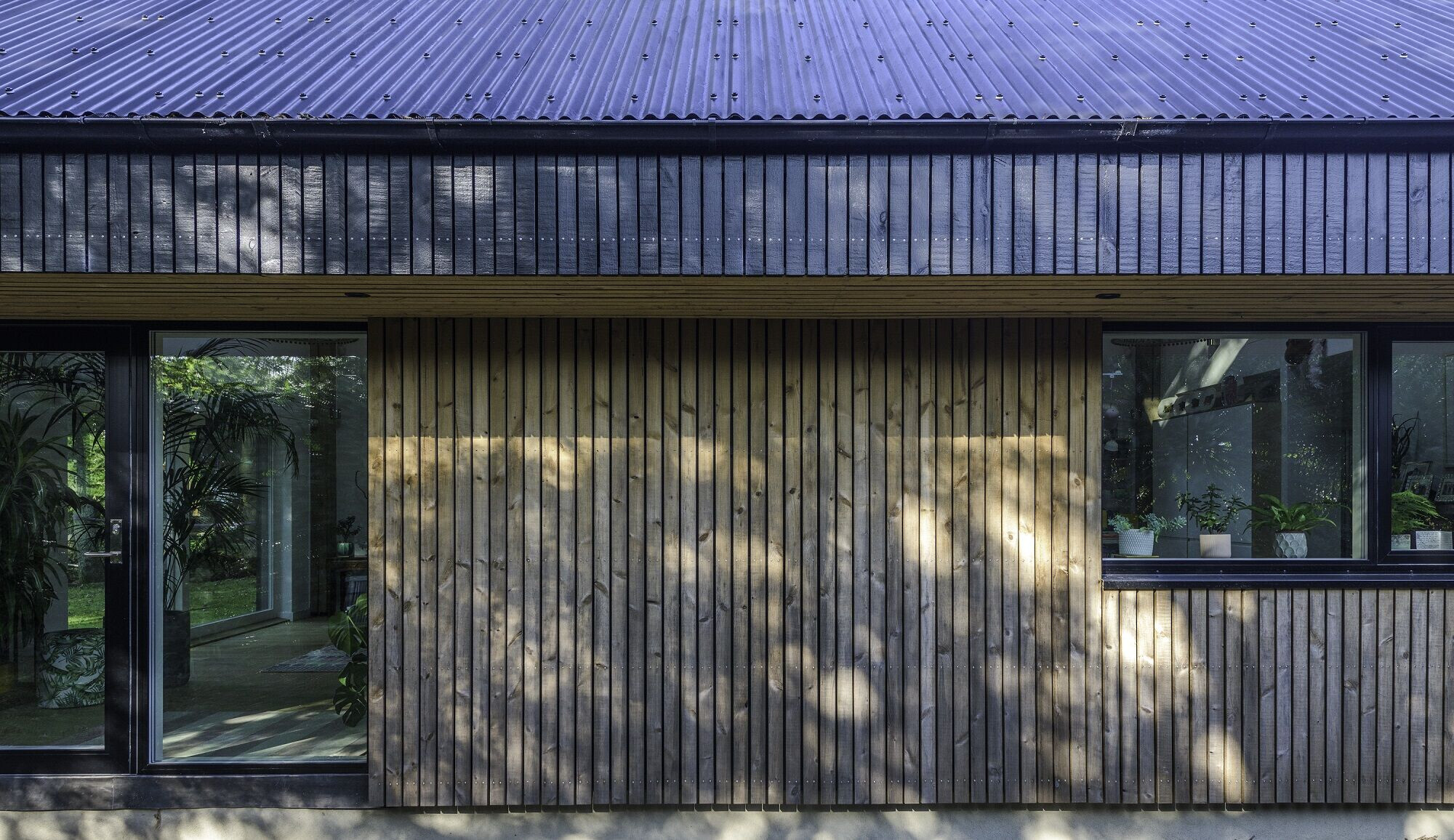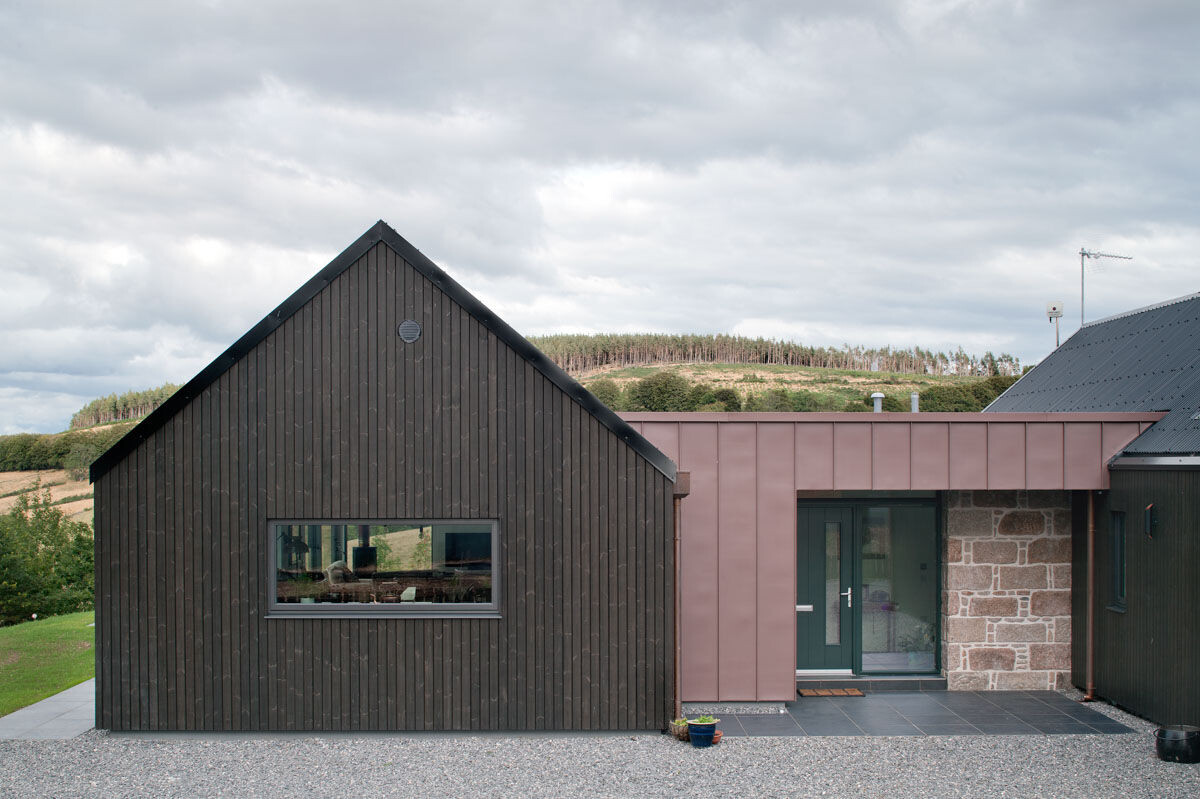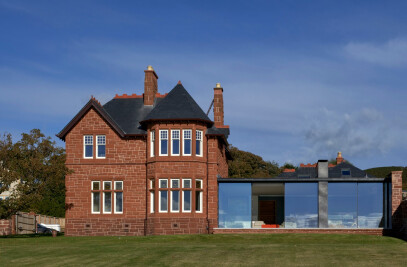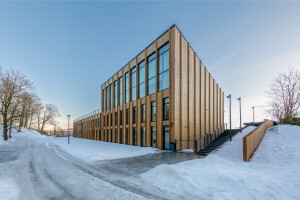Russwood's Thermopine thermally modified Scandinavian pine wood cladding stands as a testament to the company's commitment to quality, innovation, and environmental responsibility. Utilizing Scandinavian pine, known for its durability and straight grain, Russwood employs a meticulous thermal modification process that enhances the wood's performance and longevity.
The thermally modified treatment involves subjecting the pine to controlled heat, resulting in improved stability, reduced moisture absorption, and increased resistance to decay. This process not only strengthens the wood but also imbues it with a distinctive rich color, creating a visually appealing and timeless aesthetic.

Russwood's Thermopine cladding offers architects and designers a versatile material that can withstand diverse weather conditions while maintaining its structural integrity. The thermally modified Scandinavian pine wood exudes a warm and natural ambiance, making it a popular choice for both contemporary and traditional architectural designs.
Enhanced durability
Thermopine® is a timber with enhanced stability and durability, produced by thermally modifying Scandinavian grown Scots pine using only heat and steam. Less substrate movement means a paint coating can last up to three times longer than when applied to non-modified timbers, substantially reducing the maintenance requirement and in turn, the lifetime cost of the product. The advanced, highly controlled modification process results in a reduction of the wood’s tendency to shrink and swell while reducing its vulnerability to wood destroying organisms.

Profiles and fixations
Thermopine® can be produced in tongue-and-groove, open rainscreen, and secret fix profiles to meet a variation of technical requirements or aesthetic demands.
A quality wood species and a superior coating
The Scots Pine species used to produce Thermopine® originates in Northern Scandinavia and the PEFC-certified wood is sourced sustainably from well managed forests. The wood exhibits prominent figuring with an abundance of structurally sound live round and splay knots. The heartwood of Scandinavian Scots Pine is thermally modified to create a dimensionally stable timber free from resin. It is regraded in-house to Russwood’s own exacting standards. As a modified timber, Thermopine is modified using only heat and steam. No chemicals or hazardous substances are used.
The wood is low-density, classified by BS EN 350-2 as approximately 420 Kg/m³ at a moisture content of approximately 6-8%. It exhibits exceptional durability (Class 2 - 3 BS EN 350-2) due to thermal modification.
In terms of weathering, uncoated boards have a uniform dark honey brown color which will quickly weather to gray, however due to its superior coating performance, boards are most commonly supplied painted. The product can be factory coated in your choice of color from Russwood’s paint range, or with SiOO:X for a weather appearance at an accelerated rate. Thermopine® can also be Fire Retardant treated with Burnblock, but not in combination with another coating.
A sustainable product
Russwood's commitment to sustainability is evident in its sourcing of timber from responsibly managed forests. The Thermopine cladding not only provides a high-quality and visually striking solution but also aligns with the growing demand for environmentally conscious building materials in today's construction industry. Russwood's Thermopine stands as a prime example of how innovation and ecological considerations can harmoniously coexist in the world of architectural materials.
Russwood, a history of Scottish cladding
A family business to this day, Russwood has a rich industrial history originating in coal distribution. In the 1960s the Russell family operated a coal distribution business on the railway sidings at Newtonmore station, Scotland, where Russwood’s expanded site remains to this day. And in 1990 Russwood Ltd was founded in its current form by John Russell as a timber supplier, establishing an estate sawmill setup.
Russwood’s timber journey began by supplying and kiln-drying timber for furniture, doors, sheds, and picnic tables. And in 2001 Russwood began producing and supplying Siberian Larch and Western Red Cedar cladding, Siberian Larch Decking, and high-quality Oak and Larch flooring. John Russell then took his first steps into the cladding and decking market, traveling across Europe in search of timber specialists, later partnering with Dutch exporter Bert Huijsman and purchasing the company’s first ‘Artic load’ of timber. In 2014 two Biomass boilers were installed at the production facility, producing energy from timber by-products. In 2016 Russwood introduced Thermopine®, an exceptionally stable and durable timber produced by thermally modifying Scandinavian-grown Scots Pine. In 2022 Russwood established a dedicated R&D and Technical department, focusing on innovating exciting and sustainable timber products for the future.
Project References
Camhanaich, Aberdeenshire Scotland
Camhanaich is located in the agricultural area of Cushnie, in rural Aberdeenshire. The design brief was to design a home for a client to retire and to enjoy independent living. The design was contextually driven from the building forms and material seen in this area. The result is a single story house which embeds itself within the natural topography of the picturesque landscape by which it is surrounded.
The external material choices are sustainable and reflect the simple agricultural characteristics of the site and complement the landscape in the changing seasons of the Aberdeenshire countryside. The building skin is clad in Thermopine cladding with a factory coated Ebony Microtex finish. This is paired with black corrugated steel roofing which contrasts with copper downpipes and lighting fixtures.
Sable is a new-build family home located on the limits of a village in rural Aberdeenshire. The project brief was to design a family dwelling that stood out from the norm with an emphasis on the outdoor area as an extension of the home for a young family. The end result is a home that evokes a striking contemporary feel, but is peppered with features that resemble older agricultural buildings of the area. A corrugated roof in red cor-ten steel contrasts with a cladding that takes a more natural form with its bespoke vertical Thermopine timber in a dark Ebony Microtex finish. The combination of materials give this rural home an eye-catching allure and sympathetically reflects traditional local barns in this agricultural area.
The project was an adaptive restoration and extension in the Cairngorm Mountains of Scotland. The clients desired a warm and comfortable home with a light-filled family space that allowed the outdoors to be in harmony with the indoors. Thermopine cladding is the skin for the building extension. The dark wood facade works in harmony as a natural material to complement the stonework of the existing structure.


?fit=crop&w=407&h=267&auto=compress)























